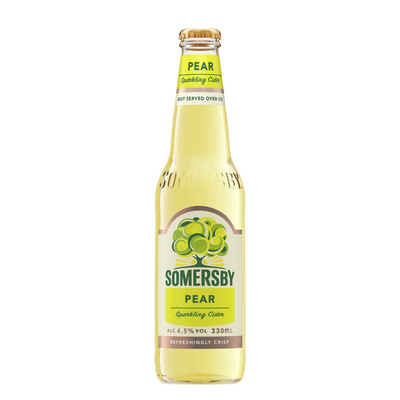Sense of Taste Tasting Panel: The World of Rosé
One of the biggest takeaways for me from the latest Sense of Taste tasting panel with internationally acclaimed wine writer Tyson Stelzer was I have good taste.
Rosé was the wine of choice this month, and I was lucky enough to join Sense of Taste managers for an afternoon of learning with Tyson about this variety. We sampled 18 varieties of rosé from Australia, California and France. All up, 32 wines.

Our managers report Rosé is a category that is performing well, and the selling point for customers is often colour and label. The French rosés, particularly from the Provence region, are branded and marketed very well, making them big sellers, but are they worth the money? That’s something we’ll come back to.
Australia produces some very good rosés, with flavours changing depending on region. Barossa rosés, for example, are made on predominantly grenache, while Tasmania is largely reliant on pinot noir.
Tyson told us statistics show Australian men are drinking just as much rosé as women, dispelling the myth, it’s just a “girlie’’ drink.
He says rosé is a versatile style and fills a gap in terms of being a good bridging wine for food. You may have a rich chicken dish, not quite right for a white or heavy red, but perfect with a crisp rosé.
I was pleasantly surprised that some of my favourites were among the hits on the day, and even more, they’re priced in the $18-$23 bracket. You don’t have to spend a fortune to get a decent rosé.
The first sampling was of six rosés in the $10-$18 bracket first up. These included Wolf Blass Red Label 2020, Devil’s Lair 5th Leg 2020, Tread Softly 2022, Le Chat Noir 2019, 19 Crimes Snoop Dogg Cali Rosé 2020 and Days of Rosé 2021.
Snoop Dogg has hit the wine scene again, this time with his Cali Rose. The 19 Crimes Rosé he’s put his face on was undoubtedly the sweetest wine we tasted. From California, it’s made up of mostly 75% zinfandel (20% grenache, 5% pinot noir).
The 2022 Tread Softly, from Riverland South Australia, leapt out in this category, clean, fresh and lively.

Our second round of tasting, rosés priced between $18-$21, were difficult to pick a favourite from.
Take it to the Grave Rosé 2021 ($18), from the Barossa, has good depth. The grenache component contributed to the strawberry, rose petal and floral aromas, while the addition of mataro gave it earthy and savoury undertones.
The Vasse Felix Classic Dry Rosé 2022, made from 100% shiraz in the Margaret River, was more structured and drier. Tyson suggests this would work well with an antipasto platter.
The three in this bracket that were hardest to split were the Alkoomi Grazing Rosé 2021, from the Frankland River, Western Australia, St Hallett Rosé 2021 (Barossa) and the Les Peyrautins Rosé 2020 (Languedoc, France).
The Alkoomi is led by merlot and slightly sweeter on the finish, the St Hallett was softer, fruity and a very easy drinking style, while the Les Peyrautins, grown from 30-50-year-old grenache vines in limestone and clay soils at 300-400m elevation, was a bit more savoury and is exceptional value.
We eventually settled on two standouts in this category – the Alkoomi and Les Peyrautins.
Next we sampled four Tasmanian and Victorian rosés over $23.
The Devil’s Corner Pinot Noir Rosé 2021, a blend of Tamar Valley and East Coast pinot noir, was really clean and the only one sampled that is fermented (30%) in oak.
We also tried Josef Chromy Rosé 2021 (Tasmania) and Dal Zotto Rosato 2021 (King Valley). A favourite in this category was the Giant Steps Rosé 2022 (Yarra Valley).
Hand-picked and early picked, banana lolly aromas were prevalent in this wine, they will go in time, says Tyson. It’s a beautiful pink in colour and the acid drive really pushes through at the finish.
Time now for South Australian rosés, excluding the Barossa, in the $23 and over category. A favourite here was the La Linea Tempranillo Rosé 2021 from Adelaide Hills, but the Pepperjack Grenache Rosé 2021, from Langhorne Creek, also stood out.
A fleshier and fuller wine, it’s almost a red wine, but not quite. Tyson says this super flexible rose would pair well with Thai or Indian cuisine.
Our second last category was Rhone and Barossa rosés, priced over $23. This was again a hard category to pick. A lot of different styles here.
The Rogers and Rufus Rosé 2021 (Barossa) and Turkey Flat Rosé 2022 (Barossa) were standouts. The La Vieille Ferme (Rhone Valley) was also well received. It’s a big seller and can often be picked up on special.
My winner in this category, by a whisker, was the Charles Melton Rosé of Virginia 2022 (Barossa).
Vivid pink in colour, it looks sweet, but wasn’t. Predominantly grenache, it had strong cherry and strawberry aromatics. Lovely weight with a crisp, citrus tang of acidity and the traditional rounding out of some apparent but silky tannins.
Down to our last category, Provence rosés over $23.
We sampled the Triennes 2021, Chateau La Gordonne 2018, AIX Vin de Provence 2021, Minuty M de Minuty Cotes de Provence 2020, By.Ott Côtes de Provence 2021 and the Domaine Sainte Marie Rosé 1884 2021. This last one was the standout for me, with 60% grenache, 30% cinsault, 6% syrah and 4% mourvedre, it was pure fruit driven with a tiny lick of sweetness.
Thanks to Tyson, our Sense of Taste managers have brushed up their knowledge on rosé, so head into your local store and ask their advice when choosing your next bottle.




